Railing on the balcony
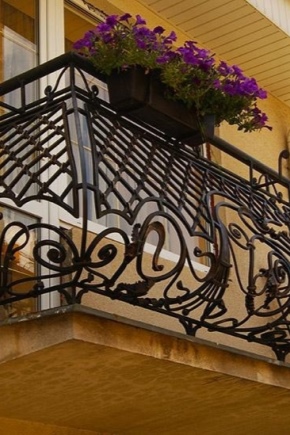
Railings on balconies are needed not only to prevent people from falling, but also to give the facade a beautiful and harmonious appearance. These important parts come in different materials and designs. Before starting direct installation, it is necessary to study the features and characteristics of all types of railings and how to install them.

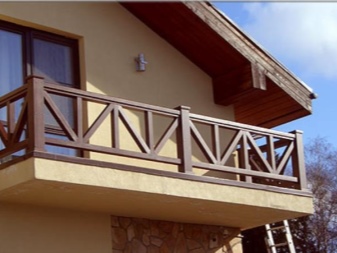
Features and Benefits
The balcony block, equipped with a beautiful railings, can effectively change the appearance of the house or make it more complete. With the help of well-chosen details that fit the overall ensemble, you can emphasize the style of the facade.

Modern firms offer home and apartment owners options made from a variety of materials. Each individual copy has its own characteristics and distinctive characteristics.
It is impossible not to mention the safety of the balcony railings. They are able to protect a person from an accidental fall. This positive quality is especially true if a small child lives in the apartment.
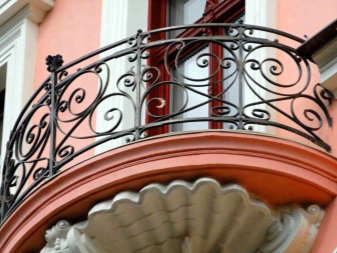

Many people use railings as a base for flower pots or chic planters with lush hanging plants. So, with the help of these elements, you can create a very delicate interior in the French style.
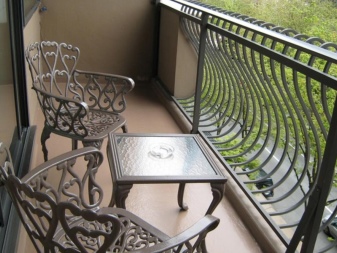
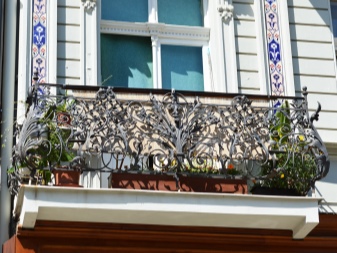
Today, balcony railings come in a variety of designs. It can be timeless classics with straight lines and minimalistic execution or luxurious baroque with its mesmerizing lines and weaves. The choice of the appropriate option depends on the overall look and style of the house, as well as the taste preferences of the owners.
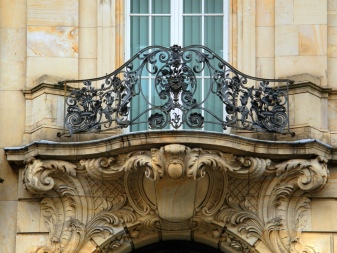
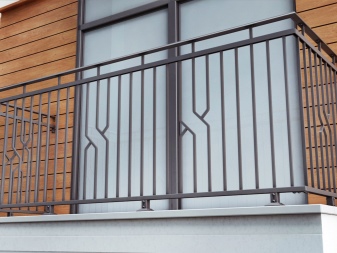
You can install these parts yourself. To do this, you need to familiarize yourself with the basics of such work. If doubts gnaw at you, and you are not confident in your capabilities, then it is better to contact professional installers.
High-quality and durable railings are made of durable materials that are not subject to corrosion and mechanical damage.
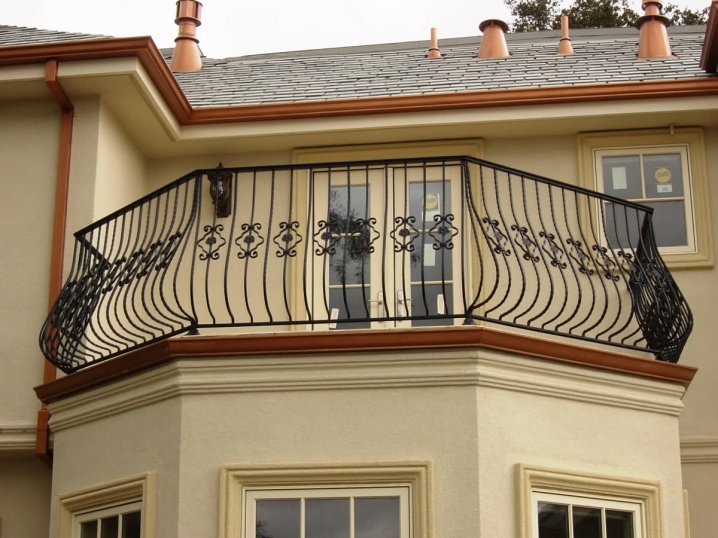
Types of structures
Balcony railings are welded, forged or combined (mixed). Let's consider them in more detail.
- The most accessible and common are welded structures. They do not differ in elegant design and more often have simple patterns of geometric shapes. But over time, railings with such designs have undergone many changes. The decorative elements in them have become more complex and sophisticated, so today you can pick up not only a laconic, but also an original version. Welded fences are in no way inferior to other types of structures. Their main advantage is durability. If you equip the territory with a parapet made of high-quality material, then it will last at least fifty years.
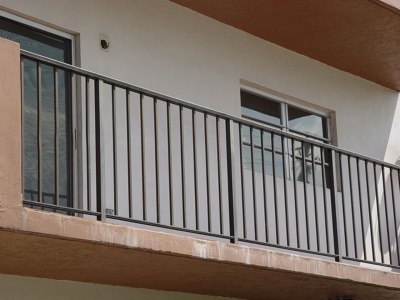
- Forged structures have a stunning appearance. Such balcony railings are of high artistic value. They are made by experienced craftsmen who approach their work in a creative way and as a result they get railings of a variety of styles. For example, a Gothic-style fence is equipped with a trefoil and four-petal rosettes. The Byzantine style is accompanied by intricate details and graceful floral ornaments. Playful fences in the Russian style have beautiful patterns in the folk style. The Renaissance handrail features spiral details, bunches of grapes and chic flower buds. The unrivaled baroque style features curls and flower baskets.Rococo style railings have asymmetrical elements, diluted with voluminous floral arrangements.
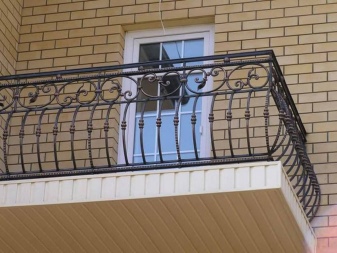
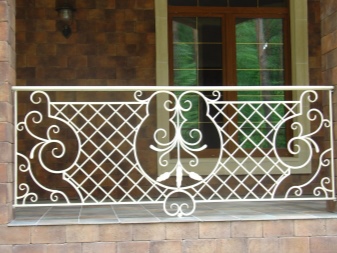
- Recently popular fences, combining several different styles at once. It is worth mentioning the spectacular French view of the balcony railing. In the old days, such railings were installed in front of the doors from the outside. The presence of a free area was also allowed, but it was very small. Over time, such designs have changed and now they are combined with chic floor-to-ceiling glazing.
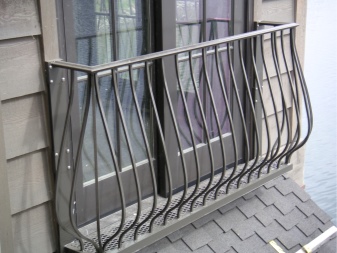

The main advantage of French fencing is its remarkable appearance. It allows you to abandon the external cladding and additional insulation of the lower part of the balcony block.
The installation of such structures does not take much time, especially if you entrust the installation to professionals. In less than 4 hours everything will be ready.
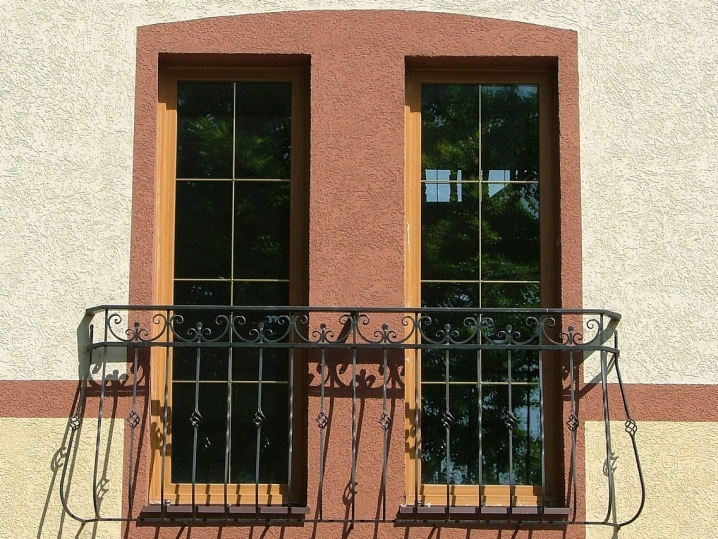
Materials (edit)
Raw materials for the production of balcony railings should be as reliable as possible and resistant to adverse environmental conditions. Let's take a closer look at the most common materials used in the manufacture of wear-resistant and durable fences.
The most common railings are metal. For example, stainless steel has a harmonious appearance. With the help of such a detail, you can create a harmonious and interesting design.
Strong parapets made of this material can be hollow, blown, or one-piece. The railing section can be rectangular or square. The shape can also be very different: lines can be strict and straight or graceful and curved.
Stainless steel is not afraid of bad weather conditions and temperature extremes. It retains its attractive appearance for a long time. Railings made of this material look stylish, even if they are not treated with decorative paints.
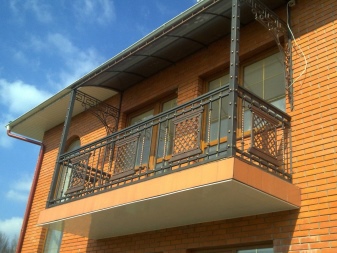
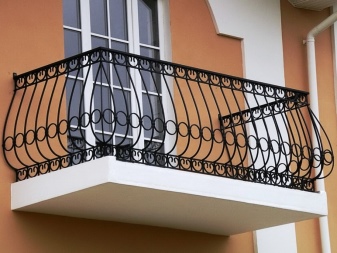
Fences made of stone and brick are massive and highly resistant. The installation of such structures is difficult, but the end result is worth it. Before installing brick railings, you need to make sure that the floor can withstand a serious load.
The stone can be natural or artificial. For example, elements made of concrete mortar with special admixtures can boast of excellent appearance and durability.
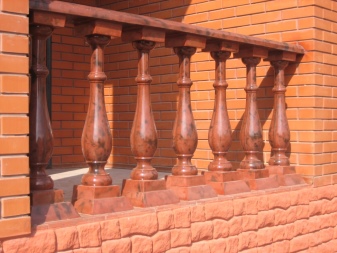

Also, the railings can be glass and plastic. If you decide to decorate the balcony with glass railings, then it is recommended to choose options with only tempered glass, as they are more durable.
In such products, stainless steel inserts may be present. Outwardly, they will look fragile and weightless, but this will not affect their strength in any way. Plastic handrails are of low cost. But they must be attached to a sturdy metal frame.
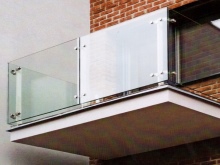
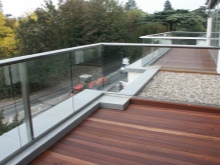
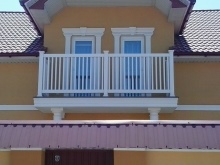
Wooden railings are common today. They can be present not only in wooden buildings, but also in brick buildings. It should be noted that such handrails are not very practical and durable.
The tree does not tolerate temperature changes and other unfavorable environmental factors. It is subject to decay, and various parasites often find their refuge in it. If you decide to equip your balcony with such a fence, then you should stock up on additional means and impregnations for wood processing.
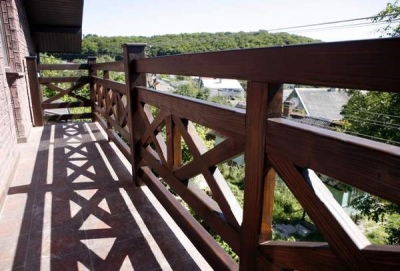
Selection Tips
If the technical condition of your balcony allows you to install a railing, then suitable details should be selected in accordance with the general style of the building.

If your house is too old, then it is not recommended to turn to overly heavy structures, as they can cause significant damage to the floors.
Pay attention to the height of the railing. It should not be lower than 1 - 1.2 m.
There should be no more than 12 cm between the vertical slats.
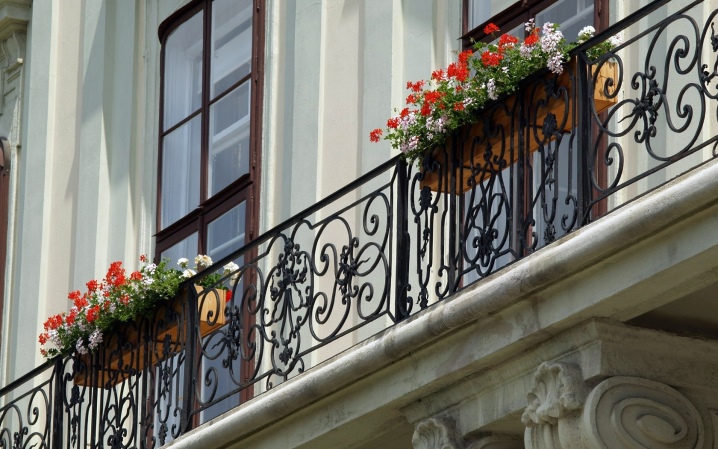
If there is a child in the house, then it is better to turn to the higher railing.
High-quality and reliable fences must easily withstand heavy loads. This applies not only to the weight of people, but also to the winds acting on the structure from the outside.
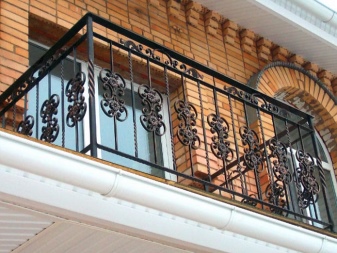
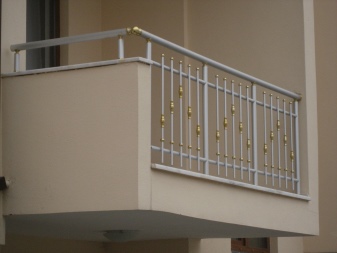
Corrosion and other similar damage should not be visible on the surface of the handrail.
If you decide to decorate a balcony or loggia with a fence with artistic forging, then it is better to refuse options with sharp details.
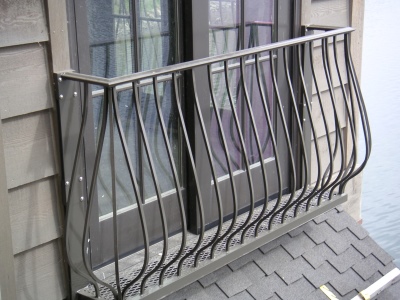
DIY installation
The way the handrails are installed is influenced by the material. The only thing that remains unchanged is that there must be a solid foundation under any fence. It can be made by attaching a large section metal profile to the outer perimeter of the concrete floor. These structures are attached using anchor bolts.
The upper part of the side railings is also installed using anchor bolts. Initially, it is necessary to assemble the fence from one edge and follow further along the perimeter of the floor. The vertical posts are attached and fixed first, after which the railing itself is installed.
The final stage will be the sewing of the walls of the fence. This is necessary for the installation of prefabricated railings made of wood or stainless steel.
How to install the railing on the balcony yourself, see the video below for more details.
If you purchased a forged parapet, then you need to install it differently. Such specimens are one-piece structures, therefore they are often welded to a strong metal profile or attached to it using bolts.
Side elements are attached to the building through embedments, to which the railings are welded or screwed.
How to install forged fences, see the video below.
Interesting design solutions
Let's take a closer look at several beautiful and attractive balcony rooms, complemented by railings.
- A chic balcony in a building finished with white plaster can be decorated with a black forged fence with stone or brick sides, also treated with light coatings. Small street lamps in black in retro style will look harmonious against such a background.
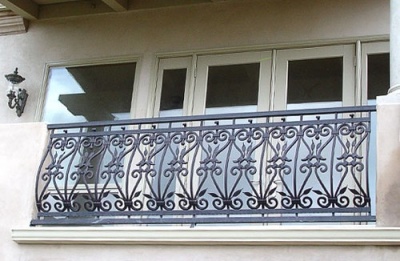
- A small open balcony can be decorated with simple black stainless steel railings. They will be combined with walls in a calm beige color and glazing with white plastic frames. The ensemble will turn out to be neat and discreet.
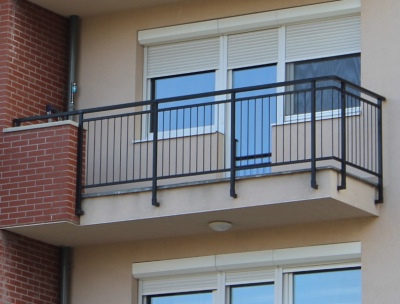
- Wooden railings will look very impressive on a small balcony with tall and narrow windows, as well as wooden frames against white or cream walls.
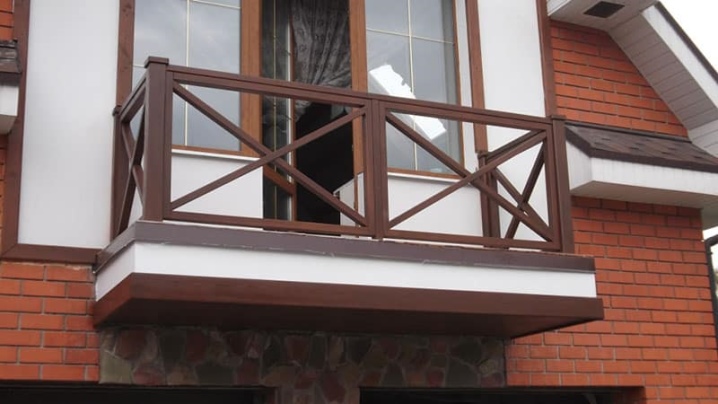
- Against the background of red and yellow bricks, black forged railings with convex sections look great. They can be supplemented with flower pots or pots with colorful plants.
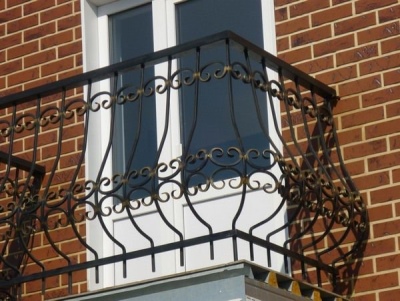
- Unpainted stainless steel railings will match balconies in a minimalist style. They can be added to buildings that have a simple and unobtrusive appearance. You can soften the rough ensemble with a beautiful laminate or euro lining.
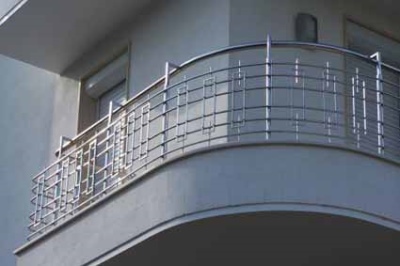













The comment was sent successfully.